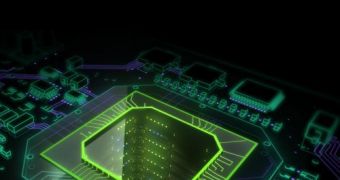Since Intel has released the Xeon E5-2600 server chips, NVIDIA figured it would make a move in the industrial sector as well.
The Santa Clara, California-based company did not actually launch any new product. Instead, Dell is the one who did that.
More specifically, Dell has announced the PowerEdge R720 and PowerEdge T620 servers, which utilize Tesla/Quadro GPU compute accelerators.
GPUs may not be able to run systems on their own, but they do excel at parallel processing via the CUDA computing platform.
The new PowerEdge use the aforementioned Intel Xeon E5 x86 CPUs and up to two NVIDIA Tesla M2090 GPUs.
Each of those cards has 512 CUDA cores and will help accelerate applications like Mathworks MATLAB (for computational research) and SIMULIA Abaqus (for computer-aided engineering).
In fact, many computationally intensive applications will see a boost.
"GPU computing is growing in demand and adoption based on its ability to provide a unique combination of ultra-high performance and energy efficiency," said Virginia Swink, executive director of Dell server solutions.
"Integrating accelerator technologies in Dell's PowerEdge portfolio opens up new usage models, and extends our ability to deliver more cycles to a broader base of scientific and commercial users."
The second server, the Dell PowerEdge T620 can have Quadro cards instead of Tesla ones. It is intended for structural analysis and design applications, like ANSYS Mechanical and Autodesk 3D Studio Max.
“Dell designed the new PowerEdge servers with input gathered from more than 7,700 customer interactions in 17 countries across four continents,” said Brad Anderson, president of enterprise solutions group at Dell.
“Our customers told us that they need end-to-end solutions to handle the complex workload problems they face every day. As such, we built our new generation of servers, systems management and workload solutions to address the needs of business end users who require maximum performance to run mission-critical applications and IT departments which demand more efficient, secure and reliable operations.”

 14 DAY TRIAL //
14 DAY TRIAL //